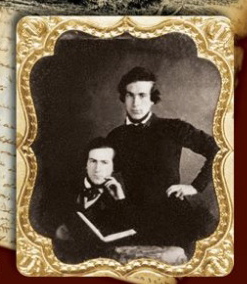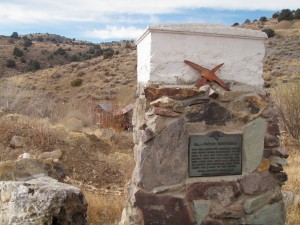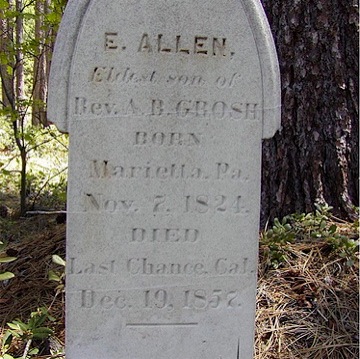By Caroline Lawrence (Former W&M Contributor)
In 1849 two good-looking, well-educated brothers from Pennsylvania joined the surge of young men travelling westward to “make their pile” in California gold.
Allen and Hosea Grosh endured hunger, cold, toothache, scurvy, rheumatism and so much dysentery that they had to learn to spell the word diarrhea for their letters home. After a few unproductive years in California, the Grosh brothers crossed the mountains to seek better luck in the territory that would one day be called Nevada.
Allen and Hosea weren’t mere placer miners – scraping at the surface or dabbling in streams – they were chemists and inventors. In between working on a perpetual motion machine they worked out the best ways of extracting silver from the stubborn quartz, for they were among the first to realise Nevada might be richer in silver than in gold. One of their letters home to their father mentions a “monster ledge”. Were they about to discover the massive silver deposit that would later be known as the Comstock Lode and would make Bonanza! a household word?
We will never know, for a few days later the younger brother Hosea put a pickaxe into his foot on the “inner side just under the instep”. At first it seemed like a minor wound but then the wound began to fester and the foot to swell. A poultice of bread and soda was not working fast enough, so Hosea asked for a different poultice of Indian meal. That didn’t work, so a local man recommended a poultice of “fresh cow dung.”
Then occurred the mishap that “sent Hosea out of this world”. While Allen was waiting for a man to bring medical supplies, “the cat jumped on the bed, and in doing so lit with all his weight on poor Hosea’s sore foot. It caused him intense pain.” The next day he died. His devoted older brother stayed long enough to bury him and settle their debts, then he set out for California.
But Allen’s diligence delayed his departure and it was now November. He was travelling with a young Canadian named Bucke, and they might have made it over the Sierra Nevada if not for a troublesome jackass that kept straying from camp at night. The time wasted looking for their pack animal caused the two men to get caught in blizzards on the same mountains that had trapped the Donner Party ten years before. Their matches got wet and their food supply was soon exhausted. Eventually they killed and ate the problematic donkey. Confused by snow, they went up the wrong peak and had to retrace their steps.
Once again without food or fire, they buried themselves in snow at night to keep warm. With their feet now badly frostbitten they finally managed to make it to a mining camp called Last Chance, literally crawling the last half-mile or so. Bucke let the doctor amputate his feet and he survived, but poor Allen died on 19 December 1857, three months after his younger brother. A poignant letter to their father records that “Mr. Grosh was buried very gently today at ½ past four o’clock.”
The editors of the letters think the Grosh brothers were based too far down the mountain to have discovered the actual Comstock Lode, but if they had lived a few years longer their expertise in chemistry and mining would surely have brought them the wealth and success they longed for.
But their dreams ended in tragedy, all because of the slip of a pickax and the wanderings of a jackass.
The Gold Rush Letters of E. Allen Grosh and Hosea B. Grosh edited by Ronald M James and Robert E Stewart are available in hardback and Kindle formats.
My own historical fiction book for kids also mentions the Grosh Brothers and gives more background to some of the colorful characters who lived on the Comstock in the early 1860s, including Mark Twain. The Case of the Deadly Desperados is out now.
This post first appeared on Wonders & Marvels in October 2012.



